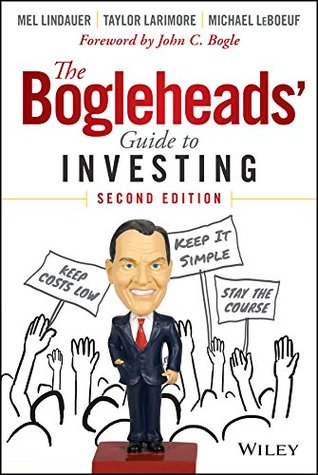More on this book
Community
Kindle Notes & Highlights
“Debt is deadly, and earning to spend gets you nowhere. The people who reach financial freedom focus on accumulating wealth over time.” While others pay attention to their net income, the Keepers are far more interested in their net worth.
A minimum of 10 percent of their take-home pay is taken off the top to be saved and invested. They eagerly participate in any employee saving and/or matching programs at work. They contribute the maximum legal amount to their Roth IRA accounts every year.
By making a long-term commitment and having a financial plan to build wealth over time, the odds are they will always have more money than they need, and someday may have more than they want.
The measure of wealth is net worth: the total dollar amount of the assets you own minus the sum of your debts.
Make it a habit to calculate your net worth once a year.
When you earn a dollar, try to save a minimum of 20 cents.
Reducing your spending is financially more efficient than earning more money. For every additional dollar of earnings you plan to save, you will likely have to earn $1.40 because you have to pay income taxes. However, every dollar you don’t spend is a dollar that can be invested. Once again, frugality pays.
The habit of buying a new car every few years has the potential to decrease your future net worth more than any other buying habit, including credit card debt. Worse yet, most cars are bought on credit, making them even more costly. General Motors makes more profit from car loans than from cars.
The way to lower your cost of driving is to buy a good used car and pay cash for it. A good rule of thumb is that the annual cost of driving a new, mid-priced car is about $2,500 higher than driving a three-year-old used car. If you buy a new luxury car or a gas-guzzling SUV, the increased cost can easily be double that or more.
So what’s really important is not the dollar amount, but rather its purchasing power, or what it will buy.
Do not buy load index funds with high annual expense ratios.
Only consider investing in no-load funds with annual expense ratios of 0.5 percent or less, the cheaper the better.
It was Sancho Panza, Don Quixote’s sidekick, who observed: “It is the part of a wise man to keep himself today for tomorrow and not to venture all his eggs in one basket.”
EMT can be described as “an investment theory that states that it is impossible to ‘beat the market’ because existing share prices already incorporate and reflect all relevant information.”
Jack Bogle’s rough guide is that bonds should equal our age. Table 8.2 shows the decline we might expect with various stock/bond combinations. Vanguard’s online questionnaire and suggested asset allocations in Appendix IV.
Whenever possible, we will use index funds with their low cost and low turnover. ETFs and low cost, low-turnover, managed funds may also be considered.
The lower rates on qualified dividends increase the tax-efficiency of stocks relative to bonds whose yield is taxed at ordinary income tax rates. For this reason, and the fact that stocks benefit from the lower capital gains tax rates, we generally recommend placing stocks in taxable accounts and bonds in tax-advantaged accounts.
For maximum tax efficiency in taxable accounts, you should do the following: Favor funds with low dividends. Favor funds with “qualified” dividends. Favor funds with low turnover. Favor tax-efficient index funds and tax-managed funds.
Roth IRA savings are worth more. The reason is that the Roth IRA contains after-tax dollars, which are more valuable than the pretax dollars in a regular IRA.
Place your most tax-inefficient funds into your tax-deferred accounts, then put what’s left into your taxable account.
Buy fund shares after the distribution date.
Despite what some investors think, simply owning a large number of mutual funds doesn’t automatically achieve greater diversification.
It’s been said that whom the gods would destroy they first make mad.
However, Morningstar found that investors who rebalanced their investments at 18-month intervals reaped many of the same benefits as those who rebalanced more often, but with less costs. Another advantage of the Morningstar method in a taxable account is that you’re assured of having long-term capital gains, since you’ve held the fund for longer than 12 months.
The best antidote to noise is knowledge based on empirical research done by competent, unbiased parties who don’t have an interest in selling investment products and services.
Motivation can’t be seen or measured, but we know it exists. It stirs emotions in us that cause us to behave in a particular manner. Behavior, the product of motivation, is what we can see and measure.
We are the sum of our choices, and most choices are made emotionally. If you doubt that, look at the food we eat, the clothes we wear, the people we associate with, where we choose to live, who we marry, and the careers we choose. Emotions rule.
Rich people plan for three generations. Poor people plan for Saturday night. —Gloria Steinem


